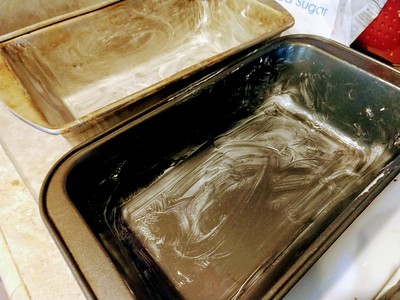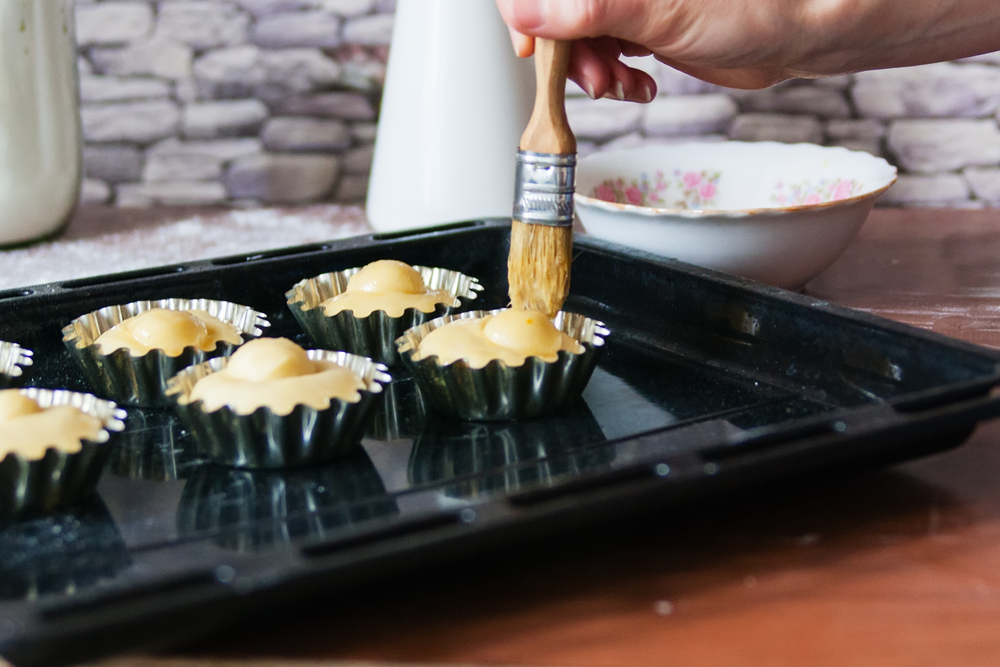Knowing when and how to grease a baking tray is key for a budding baker or cook. There’s nothing worse than putting the effort and ingredients into a recipe, only for it to stick to the tin and look spoiled at the end. Even if you have excellent non-stick pans, your mixture could still cling to the tray if you don’t use butter or oil to coat it.
There are various methods for greasing a baking pan, and each has advantages and disadvantages. It will also depend on what kind of pan or tin you use and what you have to hand in your kitchen. You can opt for different oils or butter or lightly flour a greased surface, or even use cocoa powder.
We have written some tips and advice below on how to grease a baking pan so that you don’t find yourself with half of your cake stuck to it!
Get Prepared
Ensuring that you have everything you need to hand makes everything easier when making baked goods. The method you will use might be driven by what you have available, or the recipe you are following might explain what you need to do to prepare your tin. But whichever approach you take, make sure you have what you need when making the recipe.
Materials You Might Need
You will not need everything from the below list, but we have put it together so that you have an idea of the types of things you can use.
- Cooking spray or olive oil, or coconut oil
- Butter
- Flour
- Greaseproof paper
- Pastry brush
- Paper towel
- Baking trays
- Cake tin
Options for Greasing Baking Pans

There are many different oils that you can use depending on what you are cooking. Canola oil or vegetable oil are excellent choices as they are flavourless and won’t impact the taste of the thing you are baking. Coconut oil is good if you are baking a cake. Olive oil can be used for savoury bakes but may alter the taste of a cake.
Butter is made of water and milk. Neither is the best non-stick product. Oil is probably more effective. But when you use butter to grease a cake pan, it can give the outer edge a lovely taste and golden crunch. You can use shortening to grease a pan as an alternative to butter. Shortening is simply the term used for any fat that is solid at room temperature. It has a higher fat content than something like olive oil.
If you are worried about flouring a baking pan and the flour spoiling the appearance of the finished cake, or you are making brownies or a chocolate cake, then substitute the flour for cocoa powder, as this will enhance the flavour and won’t be as visible.
If you are flouring a tin to prevent a cake from sticking, a top tip is not to be too heavy-handed. Use a very small amount and shake any excess flour from the surface.
Greasing a Baking Pan
Once you have everything prepared, you are ready to grease a baking pan.
Step 1: Apply Your Chosen Grease to the Pan

If you have chosen butter as your grease, you can either apply this by putting some on kitchen paper and wiping it around or do it the traditional way and use your fingers! It is a good way to ensure that you have given pans a thorough coating.
Using a cooking spray is straightforward as you simply spray it all around. If you use olive oil or another type, a pastry brush will be ideal for lightly greasing a round tin. This method also works well when using a bundt pan, as the shape means that you can’t use parchment paper. Cooking spray or grease brushed on works much better.
Pro Tip: Don’t grease a baking pan too early in the baking process, as the oil you use may slide down in warm temperatures and pool at the base of the pan, which means that your baked goods may stick to the sides.
Step 2: Add Flour if You Are Using It, or Grease Proof Paper
If a recipe calls for it, once you have applied oil or grease to a baking pan, you can also sprinkle flour or cocoa as an extra layer of protection against your baking sticking. Be careful with using flour on naked cakes presented without frosting or icing, as it may slightly spoil the appearance!
Greasing non-stick pans should be sufficient. But if you want to ensure that your cooking does not stick, you can cut out the shape of the base of your pan from greaseproof paper and place it inside on top of the oil or fat. This stops the paper from moving around before adding the batter or dough and popping it into the oven.
Ready, Set, Bake
Now that you have learnt how to grease a baking tray, nothing can stop you from creating mouthwatering cakes! Having the right equipment in your stock cupboards will mean you are always ready to start your favourite recipes without worrying about your sponge cake sticking when you take it out of the oven!
Butter or spray are great options for greasing a tray. And soon, you will get to know the best product that will keep your baked goods from sticking. Oils have different tastes and can impact the flavour of your baking. Hence, it would help to consider this fact before selecting the right grease for your pan.
If you want to ensure that your ingredients don’t stick, you can use a layer of parchment paper on the base and sides of your tray. This can also help lift the cake or bread from the tin, as you can use the edges of the baking paper to pull it out.
Then it is just a case of cooking your recipes and turning out perfect bakes from your cake pan or muffin tins every time!

